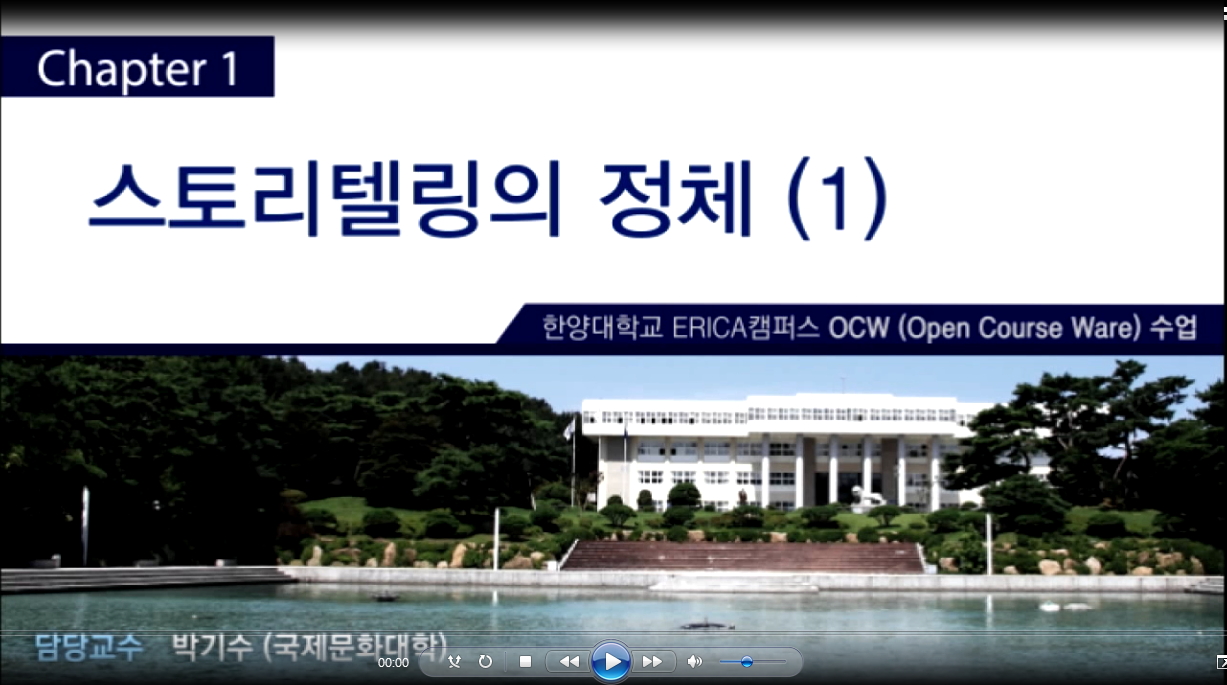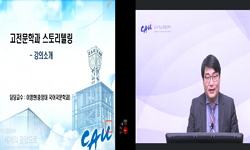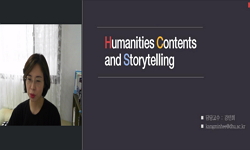고전문학은 오랜 세월을 거쳐 전승되면서 뚜렷한 서사구조를 구축했으며 정보기술이 발달하면서 다양한 매체를 통해 스토리텔링되고 있다. 여기서 ‘스토리텔링’은 ‘이야기하다’를 뜻...
http://chineseinput.net/에서 pinyin(병음)방식으로 중국어를 변환할 수 있습니다.
변환된 중국어를 복사하여 사용하시면 됩니다.
- 中文 을 입력하시려면 zhongwen을 입력하시고 space를누르시면됩니다.
- 北京 을 입력하시려면 beijing을 입력하시고 space를 누르시면 됩니다.
https://www.riss.kr/link?id=T11397233
- 저자
-
발행사항
용인: 단국대학교, 2008
-
학위논문사항
학위논문(석사)-- 단국대학교 대학원: 문예창작학과 문예콘텐츠전공 2008. 8
-
발행연도
2008
-
작성언어
한국어
- 주제어
-
DDC
853.5 판사항(22)
-
발행국(도시)
경기도
-
형태사항
v,76 장; 26cm.
- 일반주기명
- 소장기관
-
0
상세조회 -
0
다운로드
부가정보
국문 초록 (Abstract)
고전문학은 오랜 세월을 거쳐 전승되면서 뚜렷한 서사구조를 구축했으며 정보기술이 발달하면서 다양한 매체를 통해 스토리텔링되고 있다. 여기서 ‘스토리텔링’은 ‘이야기하다’를 뜻한다. 따라서 한 사람이 다른 사람에게 이야기를 하는 형태도 스토리텔링이며, 고전문학의 이야기가 문자나 정보기술을 통해 전달되는 것도 스토리텔링이라고 할 수 있다.
이야기를 전달하는 형태인 스토리텔링은 시대의 흐름에 따라 매체도 변하게 되는데, 문자가 생겨나기 이전인 구술시대의 스토리텔링은 주로 사람의 입(말)을 통해 이루어졌다. 그렇기 때문에 이 시대의 문학을 구술문학 또는 구비문학이라고 하는 것이다. 문자가 발명된 후에 구비문학은 문자로 정착하는데, 대표적인 것이 고소설이다. 산업화 시대가 도래하고 정보기술이 발전하면서 이야기는 영상미디어와 결합해 스토리텔링되었다. 영상미디어와 같은 디지털 기술이 스토리텔링과 결합하면서 문화콘텐츠가 만들어지는데, 대표적인 것으로 TV 드라마, 영화, 애니메이션 등이 있다.
문화콘텐츠는 영화, 방송, 음악, 게임, 공연, 애니메이션, 문학, 모바일 등 대중들이 향유하는 문화 요소에 디지털 기술이 결합되어 이익 창출을 목적으로 하는 산업적 개념이 강하다. 대중은 영화, 텔레비전(방송), 소설, 만화(애니메이션), 게임, 공연예술, 인터넷모바일과 같은 매체를 통해 다양한 이야기를 접하게 되며 동일한 이야기라 할지라도 각 매체에 따라 ‘이야기되’는 형태가 다르며, 그것을 수용하는 대중들도 각기 다른 감상을 하게 된다. 본고는 문화콘텐츠 하위 항목들 중에서 대중의 접근이 가장 용이한 방송, 특히 서사구조를 갖고 향유자들에게 이야기를 전달하는 형태를 보이고 있는 TV 드라마를 연구 콘텐츠로 선정했다. 또한 ‘스토리텔링’을 넓은 개념의 ‘이야기하다’로 정의해 고전문학이 문화콘텐츠로 생산되는 과정에서 서사가 수용 또는 변형되는 것을 스토리텔링으로 간주했다. 그 분석 대상으로는 드라마 <쾌걸 춘향>과 <쾌도 홍길동>을 선정해 고전문학 「춘향전」과 「홍길동전」이 현대의 문화콘텐츠로 스토리텔링되는 과정에서 서사와 캐릭터가 변화하는 양상을 연구했다.
그에 앞서 고전문학의 의미와 가치를 조명하고, 고전문학이 TV 드라마로 스토리텔링된 사례를 크게 세 가지 유형으로 나누었다. 첫 번째는 매체 전환 스토리텔링으로, 고전문학을 TV라는 영상매체로 고스란히 가져와 스토리텔링해 드라마로 재창조하는 방식이다. 대표적인 사례로는 <전설의 고향>, <조선왕조 500년>, <서동요> 등을 들 수 있다. 두 번째 방식으로는 원전의 특정한 주제나 인물을 활용해 현대적으로 수용하는 것으로, 여기에는 <쾌걸 춘향>이 대표적이다. 마지막으로는 원전의 일부 모티프만을 차용해 새로운 작품으로 재창조하는 방법이다. 이러한 방식으로 만들어진 드라마로는 <쾌도 홍길동>과 <향단전>이 있다. 이를 바탕으로 본고는 현재까지 가장 빈번하게 스토리텔링이 이루어졌던 첫 번째 유형을 제외하고, 최근 들어 두각을 나타내고 있는 한 가지 모티프나 인물만을 수용해 스토리텔링한 <쾌걸 춘향>과 <쾌도 홍길동>을 분석 텍스트로 삼은 것이다.
두 작품의 분석과 스토리텔링 연구를 통해 시대를 초월해 현대에서도 뛰어난 명작으로 주목받고 있는 고전문학이 단순히 읽기 위한 문학 작품을 뛰어넘어 문화콘텐츠에 고루 적용되어 많은 향유 계층을 확보하고, 문화산업적 측면에도 기여할 수 있음을 밝혔다.
다국어 초록 (Multilingual Abstract)
The classical literature has built up a distinctly narrative structure as it has been handed down for a long time, while it has been carried out in storytelling through various media with the development of the information technology. The 'storytellin...
The classical literature has built up a distinctly narrative structure as it has been handed down for a long time, while it has been carried out in storytelling through various media with the development of the information technology. The 'storytelling' herein refers to 'telling a story'. Consequently, the pattern that one tells others a story is storytelling, while what the stories of classics are passed on over the time with the writings or information technology is storytelling as well.
This storytelling changes its medium to communicate stories according to the change of times, and the storytelling was done mainly with the mouth of people at the age of dictation before the invention of characters. Hence, the literature at this age is referred to as the oral literature or the literature by word of mouth. The literature by word of mouth settled down with characters since their invention, the representative of which is ancient novels. With the advent of industrialization age and advancement of information technology, stories have come to the storytelling in combination with the media of picture. The cultural contents have been made while the digital technologies such as the media of picture are combined with the storytelling, and what represents them includes TV drama, movie, animation, etc.
The cultural contents strongly show the industrial concept aiming at the generation of profits as the digital technology is combined with the cultural elements that the public enjoy, such as movie, broadcasting, music, game, performance, animation, literature, mobile contents, etc. The public have access to various stories through such media as movie, television (broadcasting), novel, cartoon (animation), game, artistic performance and mobile internet, where the pattern that 'stories' are told is different from one medium to another although the same story is being told and the public who accept them differently appreciate them each other as well. As the contents for study, this paper selected broadcasting that has the easiest access by the public among the subdivision items of cultural contents, especially TV dramas with a narrative structure, which show the pattern to communicate stories to those who enjoy them. In addition, what the narration is accepted or transformed is regarded as the storytelling in the process of producing the classical literature as the cultural contents by defining the 'storytelling' as 'telling stories' in a wider concept. The aspects of variation for the narration and characters in the process of becoming the storytelling as the cultural contents of modern times from the classics of 「Chunhyangjeon」 and 「Honggildongjeon」 were studied as it selected 'Qaegul (Jolly Girl) Chunhyang' and 'Qaedo (Jolly Sword) Honggildong' to be the subjects for its analysis.
The significance and value of classics were clarified in advance and the examples of storytelling as TV dramas from the classical literature were categorized largely into three classes. First, as the storytelling of media conversion, it is a method to completely take up and re-create the classical literature as the medium of picture called TV. The representative cases might be <Hometown of Legend>, <500 Years of Chosun Dynast>, <Seodongyo>, etc. Second, there is a method to utilize particular themes or figures in the original writings and accept them in a modern manner, where 'Qaegul (Jolly Girl) Chunhyang' is a representative. Finally, there is a method to borrow part of motif from the original writings and re-create a new work. Dramas produced in such a way include <Qaedo (Jolly Sword) Honggildong> and <Hangdanjeon>. Based on such categorization, this paper employed 'Qaegul (Jolly Girl) Chunhyang' and 'Qaedo (Jolly Sword) Honggildong' as the texts for analysis, which carried out the storytelling recently by accepting one prominent motif or figure, excluding the first class where the storytelling has been done most frequently up to now.
It was clarified through the analysis of the two works and the study of storytelling that the classics noted for excellent masterpieces even in the modern society over the times might be evenly applied to the cultural contents, attract many strata to enjoy them, and contribute to the aspects in the culture industry beyond the literary works just to be read.
목차 (Table of Contents)
- Ⅰ. 서론 = 1
- 1. 연구의 목적 및 방법 = 1
- 2. 선행 연구 검토 = 4
- Ⅱ. 스토리텔링과 문화콘텐츠의 이론적 고찰 = 8
- 1. 스토리텔링과 문화콘텐츠 = 8
- Ⅰ. 서론 = 1
- 1. 연구의 목적 및 방법 = 1
- 2. 선행 연구 검토 = 4
- Ⅱ. 스토리텔링과 문화콘텐츠의 이론적 고찰 = 8
- 1. 스토리텔링과 문화콘텐츠 = 8
- 2. 고전문학과 텔레비전 드라마의 스토리텔링 = 18
- Ⅲ. 고전문학을 활용한 텔레비전 드라마의 스토리텔링 사례 연구 = 28
- 1. 고전문학의 현대적 수용 - 드라마 <쾌걸 춘향> = 28
- 2. 고전문학의 재해석 - 드라마 <쾌도 홍길동> = 40
- 3. 고전문학의 스토리텔링과 캐릭터 = 58
- Ⅳ. 결론 = 66
- 참고문헌 = 70
- Abstract = 74












